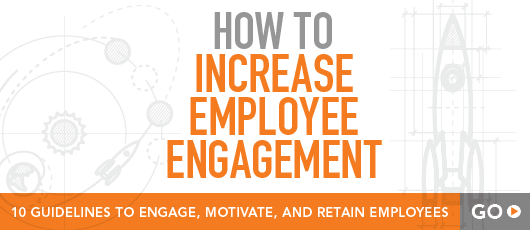The Do's & Don'ts of Workplace Diversity Initiatives
 Within the S&P 100, 96 companies now maintain some type of internal diversity initiative. And with diversity issues grabbing national headlines, it's never been more important for employers to take a stance.
Within the S&P 100, 96 companies now maintain some type of internal diversity initiative. And with diversity issues grabbing national headlines, it's never been more important for employers to take a stance.
If you've yet to develop diversity training, mentoring, recruiting, and other such programs, this post will help you learn from the lessons of companies before you.
Do: Emphasize inclusion.
Though often used when discussing diversity, inclusion is not the same thing. The Society for Human Resources Management (SHRM) defines inclusion as, “The achievement of a work environment in which all individuals are treated fairly and respectfully, have equal access to opportunities and resources, and can contribute fully to the organization’s success.” Make sure your organization is one where employees feel they can contribute to the success of your company, regardless of race, gender, creed, sexual orientation, or physical ability.
Do: Survey employees for feedback on diversity and inclusion.
An annual engagement survey is the perfect time to ask your employees about diversity and inclusion. Surveying your employees will help you establish a baseline and allow you to gauge employees’ views on existing initiatives. This data can also be used when forming additional diversity and inclusions efforts. As Boris Groysberg and Katherine Connolly said in a Harvard Business Review article about workplace diversity, “Metrics are key because, as we know, what gets measured gets done.”
Do: Use benchmarks.
Speaking of engagement surveys, make sure yours includes industry benchmarks. Industry benchmarks can help shape your diversity and inclusion efforts because they provide an opportunity to know where you stand relative to other organizations in your industry, size category, or region. It’s like a built-in competitor analysis.
Don't: Treat diversity as an internal, "HR issue."
Diversity is an issue that affects the entire company, and attitudes toward it start at the top and funnel down. Make sure your organization incorporates diversity into every aspect of its purpose and function.
Don't: Neglect any employee group.
Diversifying your workplace takes more than hiring a few people who aren’t the same race as the majority of your employees. Too often, diversity and inclusion efforts center around employees of color and neglect other aspects that make organizations diverse, like gender and sexual orientation, religious beliefs, physical ability, economic status, and creed. For example, the Center for American Progress reports that anywhere from 25 to 43 percent of gay people have experienced some form of discrimination in the workplace, and 90 percent of transgender employees have experienced some form of harassment or mistreatment at work. Make sure your diversity and inclusion efforts encourage an attitude of openness toward all employees in your organization. Your employees should feel freedom to express their opinions and ideas with equal weight given to all.
Don't: Overlook senior leadership and board representation as areas that need improvement.
Even if your organization has some phenomenal diversity initiatives in play, they’re not going to matter if the board of directors is made up of a homogenous group. The same goes for company leaders. A diverse board and leadership team helps manifest the benefits of diversity in the workplace.
In an article about diversity in the workplace, Paul Block, CEO of the U.S. sweetener manufacturer Merisant Company, had this to say about diversity: “People with different lifestyles and different backgrounds challenge each other more. Diversity creates dissent, and you need that. Without it, you’re not going to get any deep inquiry or breakthroughs.”
Recognizing and championing diversity in the workplace helps employee engagement. For more ideas on how to create the best work environment for you employees, download our ebook, How to Increase Employee Engagement.






